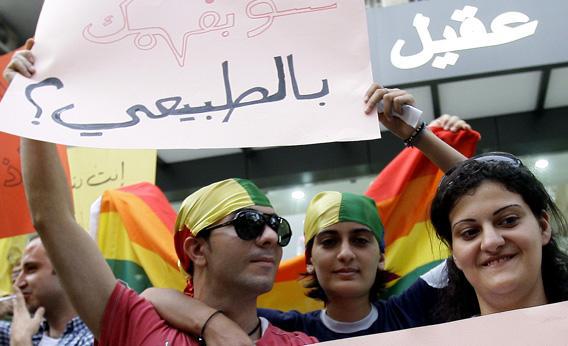The Arabic subtitles for the film The Best Exotic Marigold Hotel translate the word gay into the Arabic equivalent of pervert, according to an article by Steve Clemons in the Atlantic. A pair of Arabic speakers told Clemons that Arabic doesn’t have a respectful word for gay, except for the recently coined word mithli. When did the Arabic-speaking world recognize the existence of homosexuality?
More than a millennium ago. Clemons has picked up on a decades-old debate in Western academic circles. In Michel Foucault’s 1976 book The History of Sexuality, the French philosopher claimed that although homosexual acts are prehistoric, Europeans and Americans didn’t recognize homosexuality as a trait until the 19th century. Several linguists backed Foucault’s claim, arguing that many Western languages had words for homosexual acts, but not for homosexuality, until very recently. If these theorists are correct, then the Islamic world was about 1,000 years ahead of the West on this issue. Classical Arabic texts have several words for homosexuals and homosexuality dating back to the ninth century.
The word luti, for example, appears in 13th-century Arabic literature. It’s a reference to the biblical and Quranic personage Lot, who was associated with the sinful city of Sodom. Luti is usually translated as sodomite and is widely considered derogatory, but some gay Arabic writers have recently co-opted the term the way gay anglophones reclaimed the word queer in the 1980s. (Like the translators of The Best Exotic Marigold Hotel, Google caused an accidental stir in 2006 when a user noticed that its software translated gay to luti. The company has since adopted the less controversial mithli.)
At least as old as luti is ubnah. It typically refers to receptive gay male sex, but according to gay-studies scholar Stephen O. Murray, medieval Arabic medical researchers also described ubnah as a condition, debating whether it was susceptible to treatment. One physician opined, “If the ubnah is prolonged, the person affected by it cannot be cured, in particular, if he is obviously feminine and effeminate and loves very much to be like a woman.”
The eighth- and ninth-century writers Abu Nuwas and Al-Jahiz used the word latah for homosexuals, and the latter writer even referred to ghulat al-latah, or ultra-homosexuals. Abu Nuwas also provided one of the more beautiful medieval Arabic references to homosexuality, asking “Would I choose seas over land?” in one of his poems. The sea is a metaphorical reference to the love of women, while land is the love of men, according to Lebanese-born political scientist As’ad AbuKhalil.
Many of the words referring to homosexuality in the Islamic world eventually faded into disuse, replaced by vague and derogatory terms. In Arabic, sadj, meaning peculiar, is now a common label for a homosexual person. Shudhudh jinsi, which means sexual perversion, became shorthand for homosexuality. Academics have led the recent movement to develop neutral terms for gay people. Arabic translators of Sigmund Freud’s work are credited with coining mithli, and a Moroccan magazine for gay people has taken the name. The movement has spread beyond Arabic-speaking countries. Turks, for example, refer to gay people as escinsel, —es means same, and cinsel refers to gender—or sometimes borrow the English word itself, referring to gay people as homoseksuel. The English word gay is also gaining currency across the Islamic world.
Got a question about today’s news? Ask the Explainer.
Explainer thanks Hanadi Al-Samman of the University of Virginia.
